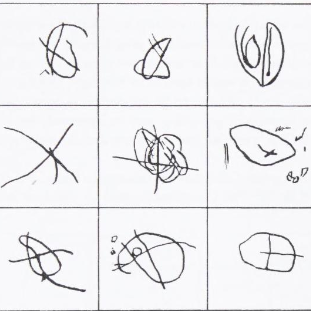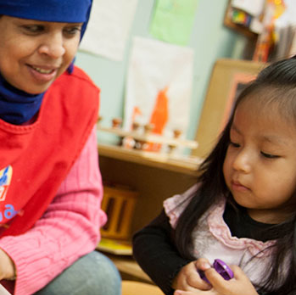Image From Analyzing Childrens Art, Rhoda Kellogg, p. 49
When very young children are presented with art materials, whether fingerpaint or crayons, their first instinct is to “scribble.” Often, adults see this scribbling as meaningless until children begin to label their drawings. These early scribbles, though, are as important for their own sake as they are to children’s later development of hand-eye coordination and fine motor skills, as well as the abstract representation they will need to use to understanding reading and writing.
When children scribble, they get the proprioceptive feedback from the tool in their hands (or, in the case of fingerpaint, the hands themselves) and learn how to track and plan the movements of their arms, elbows, wrists, hands, and fingers. Rather than being inferior to identifiable or named drawings, scribbling is a way for children to experiment with their influence on their surroundings.
Scribbling is also joyful and enjoyable! Children are learning about aesthetics and what looks good to them. They might tell stories or name the scribble to represent an idea or person, or they may be interested for just as long as it takes to make the marks on the paper.
A space to scribble can be simple with just crayons and paper available on a shelf children can access. Outdoors, chalk is a classic, and the large size presents both an interesting challenge and enticing opportunity to cover a much bigger surface than most children can indoors.
For Reflection:
What opportunities do very young children have to scribble in your program? What materials can they use?
How do you respond to children’s scribbles? Do you display them?
For further reading:
Kellogg, R. (2015) Analyzing Children’s Art, Girard & Stewart


